As we self-convert a Mercedes Sprinter Van for full-time van life, we’re researching different power options to supply us with enough electricity to live and work off-grid. In this article, we share our research on the EcoFlow PowerKit and whether it will be a proper solution for our van. Read to the end of our EcoFlow Powerkit Review to see our final verdict and pro-cons, and leave a comment if you have any questions.
Note: We use affiliate links which provide us a little kickback each time you use one of our links and make a purchase, without any additional cost to you. We do not recommend products that we don’t already love or have heard great things about, so you can trust we’re only suggesting great products to you.
What is the EcoFlow PowerKit?
The EcoFlow PowerKit is an all-in-one power system created by EcoFlow. EcoFlow is a Chinese/American company specializing in power banks. They reached mainstream popularity with their portable bank, the EcoFlow Delta, winning many product awards in 2022. EcoFlow released their PowerKit to target the needs of mobile and off-grid power systems, replacing custom wired battery and component systems.
The PowerKit is a system comprised of the following plug-and-play pieces:
- 2kWh or 5kWh 48V Batteries (3 max)
- The Power Hub (Inverter Charger)
- The Console
- The Smart AC/DC Distribution Panel
- The Power Dock (Battery Extension)
All of the PowerKit components are smart and can be configured with their mobile app.
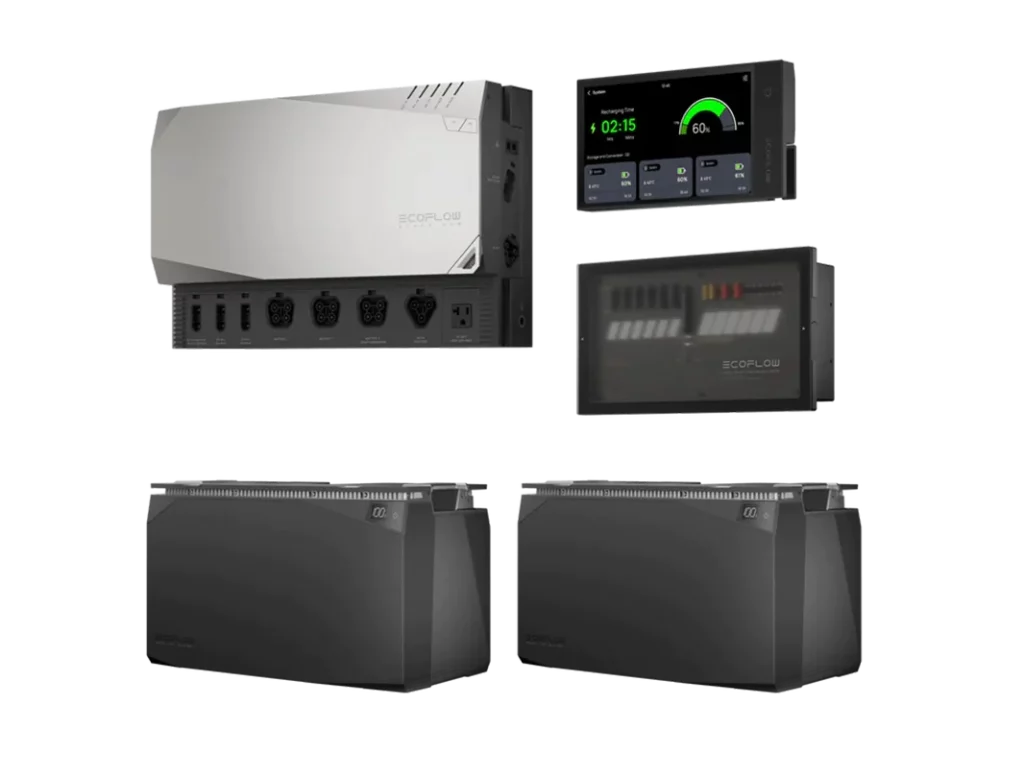
What are the EcoFlow PowerKit Batteries?
The 48V EcoFlow PowerKit Batteries come in two versions, the 2kWh (40 ah @ 48V) and the 5kWh (100ah @ 48V) versions. The 5kWh battery is larger and heavier than the 2KWh; however, they both connect to the Power Hub with the same port. The 5kWh accepts 80A max charge and 100A max discharge, which is plenty, although the Power Hub handles all the configuration of these batteries. You can include a maximum of 3 batteries connected to the Power Hub, limiting your total possible battery bank to 15kWh (300 ah @ 48V).
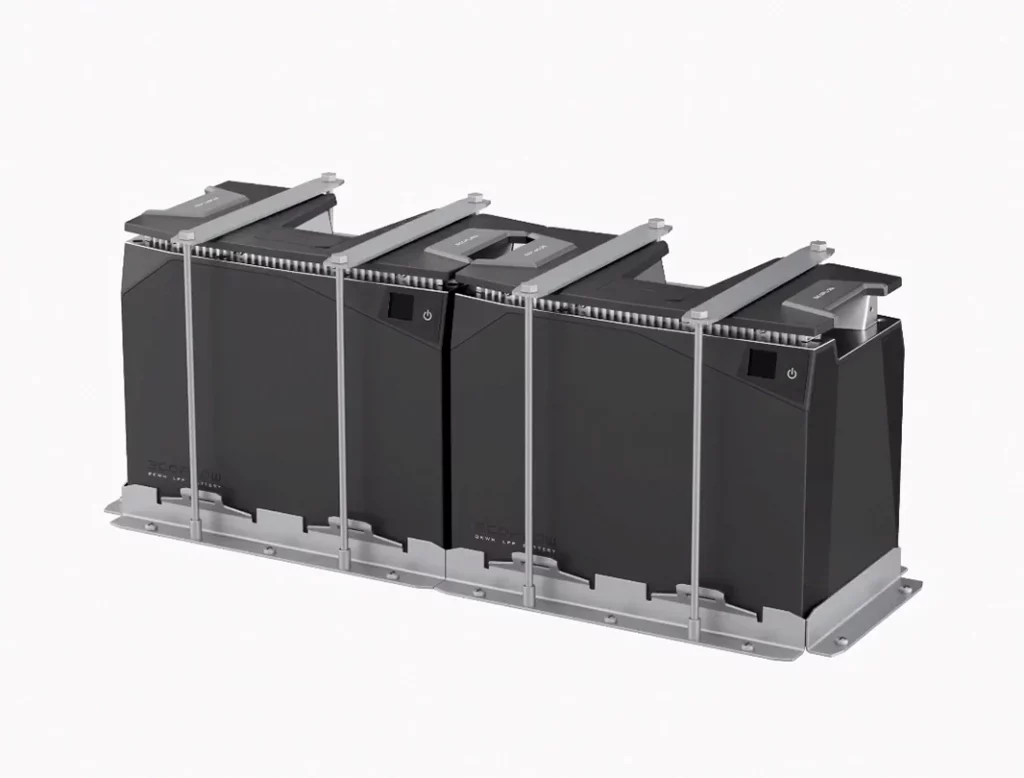
What is the EcoFlow PowerKit Power Hub?
The EcoFlow PowerKit Power Hub is the brains of the operation, and it comprises many electrical components within one.
- 3600W Inverter powering your AC appliances.
- MPPT Solar Charge Converter funneling a maximum of 4.8kW of solar power into your battery bank.
- DC / DC Charger that accepts 1.6kWh from your Alternator or can also be used to kick-start your starter battery.
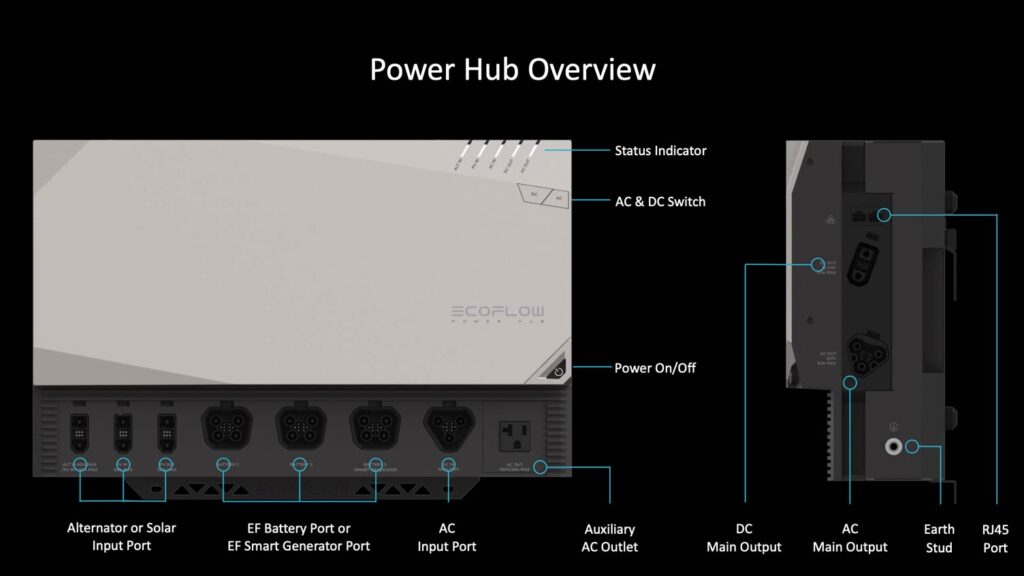
What is the EcoFlow PowerKit Console?
The EcoFlow PowerKit Console is the touchscreen display used to control and review the system’s behavior. This console will show data like current usage, charge times, and state of charge and can be used to control the inverter charger, among other things.
What is the EcoFlow PowerKit Smart AC/DC Distribution Panel?
The EcoFlow PowerKit AC/DC distribution panel is also included in the PowerKit. Outside the primary AC and DC output, there are 6 AC outputs with 20A fuses and 12 fused DC outputs. These are all controllable and can be labeled using the PowerKit Console. You can decide to output 12V or 24V from your PowerKit.
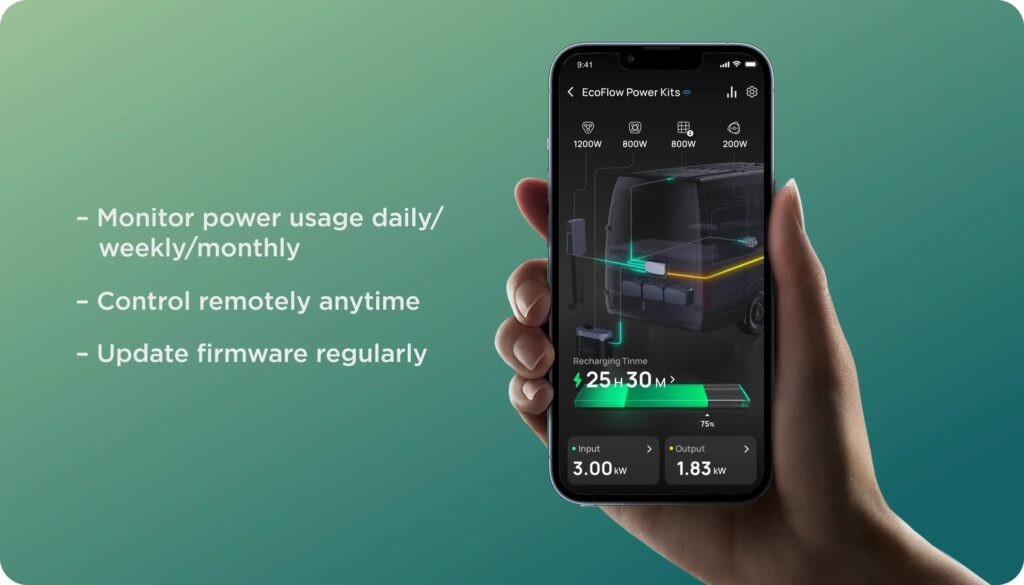
What are the Options for the EcoFlow PowerKit?
EcoFlow Power Kits had a revamp at the end of 2024 and now don’t have the different kits. For the Gen2 series you build your pieces as needed. I think this refresh is great because it aligns with EcoFlows “plug and play” branding. Want more batteries? Sure. Want an DC Air Conditioner cord, no problem. Etc.
We recommend you check out Campervan HQs page for their EcoFlow Power Kit. First, you select either a 30A or 50A setup, and then add batteries and cables as needed. You can even purchase a pre-built cabinet to make your install incredibly simple.
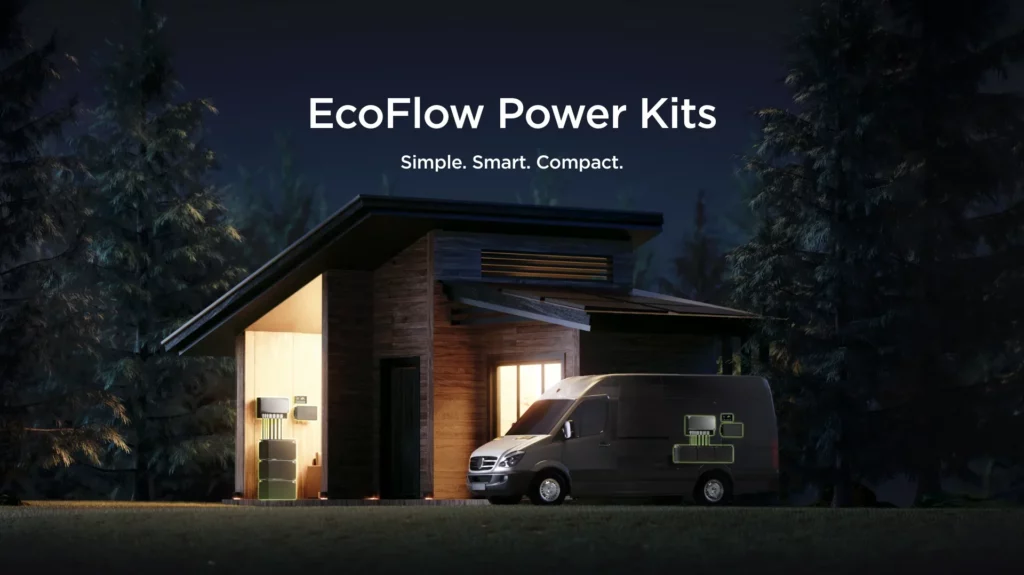
Can you use a DC Air Conditioner with the EcoFlow PowerKit?
To have the capability for a DC Air Conditioner, you must buy the correct EcoFlow PowerKit. While any configurations will support an AC Air Conditioner, the standard DC output on the fuse panels will not support your air conditioner! Air Conditioners require much more power than those fuses can handle.
To get a DC Air Conditioner to work with EcoFlow, the following must be true:
- You have a 48V Air Conditioner (like this one).
- You have an empty battery slot.
If both are met, you can purchase a dedicated cable for your Air Conditioner to plug into the PowerHub in the third battery slot. If you plan to use a dedicated battery spot for your AC, then we recommend adding on a Power Dock if you need additional batteries.
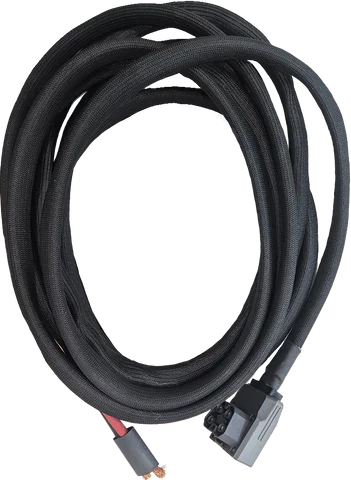
How much does the EcoFlow PowerKit cost?
The EcoFlow PowerKit is priced between $10,000 and $15,000, which makes it a premium product. We recommend purchasing EcoFlow from a reseller like Campervan HQ. This way, you can ensure premium customer service and work with Campervan HQ directly over EcoFlow.
What size EcoFlow PowerKit do you need for Van Life?
Determining the size of any power bank for Van Life is heavily dependent on your needs and desires. First, You must do an electrical breakdown, listing all your devices and appliances and how long you expect to use them.
Here is ours:
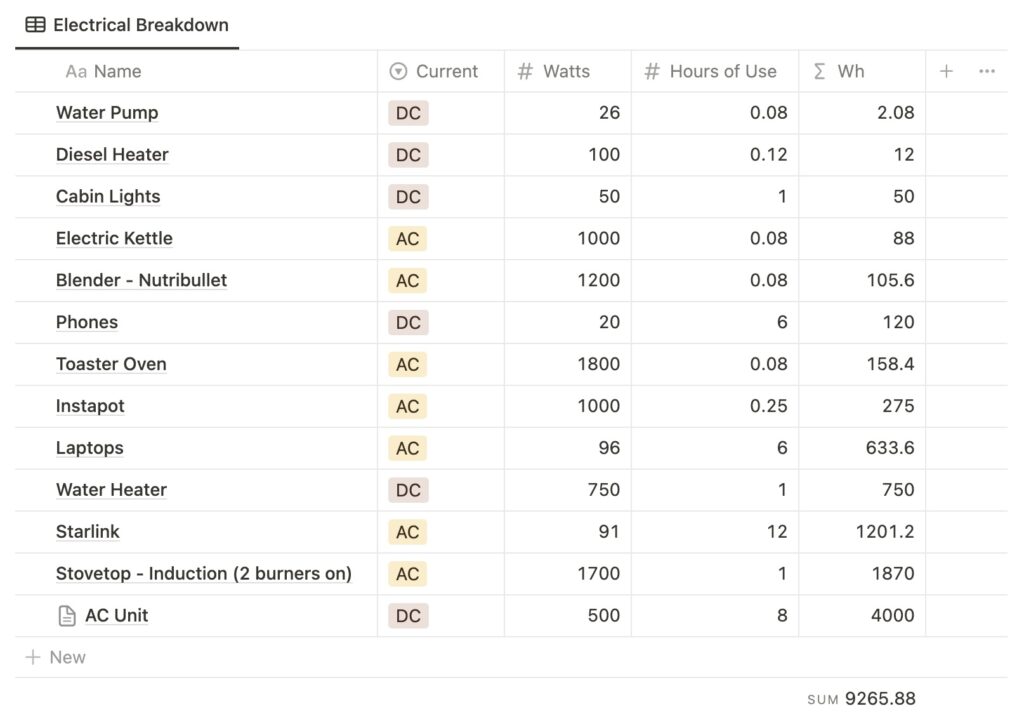
So on a day that we run everything, we could theoretically use 9.3 kWh of battery.
Let’s taper this down to a more day-to-day running:
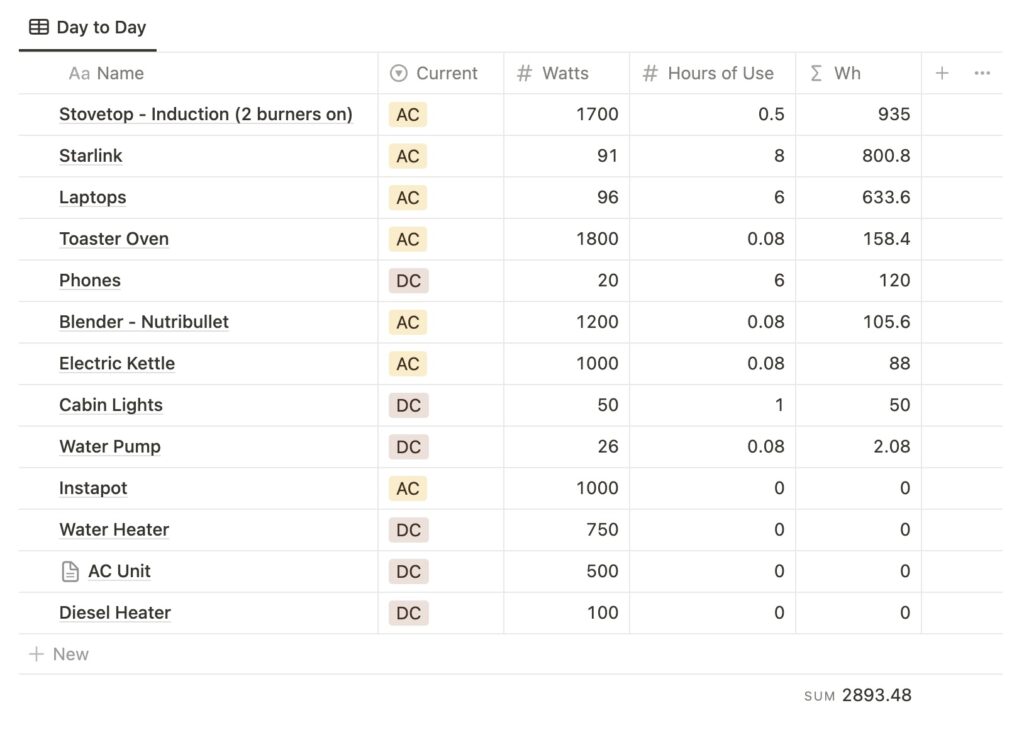
As you can see, dropping our AC unit, conservatively estimating our cooking, and reducing our Starlink hours drop our estimated daily use to 2.9kWh.
We can use both these estimates and our goals for Van Life to determine what system is best for us! Let’s take two examples: a weekender and a full-timer.
Best EcoFlow PowerKit for a Weekender
A weekender, or a van lifer going on short trips, cares less about charge and more about charge storage. If your batteries last all weekend, you can charge back up when you’re home so you’ll need enough batteries to last. If you are using everything with 0 incoming charge like Solar, you’ll need (at minimum) the 10kWh bank to last the 9.2kWh of use over 24 hours!
Best EcoFlow PowerKit for Full-Time Van Life
A full-time van lifer (our use case), cares more about charge than a weekender because they need to be able to sustain life on the road in the long term. Using the 9.2kWh estimate, the only way this is possible with EcoFlow is if you are using a generator or staying at campgrounds nightly. This is because you can not create enough charge with your alternator and solar panels to overcome this. With the more conservative use of 2.9kWh we can estimate how long you’d need to go in and out of campgrounds.
| Type | Estimated Daily Input |
|---|---|
| 700W of Solar | 2.8kWh (sunny day) |
| Alternator | 800Wh (1 hour of driving |
Total: 3.6kWh
With these estimations, if you drive for an hour a day, you will be net positive. If it is cloudy over a few days or you are staying put for a week, you will slowly loose charge in your batteries. For this reason, you will want to go with the 15kWh battery bank if possible. This way you can limit time at a campground to once every 5 days in poor weather to keep your batteries charged.
⚡️ 2.9 kWh / day * 5 days ~ 15kWh
Of course, all of these numbers are our personal estimates, and you’ll need to do them yourself! For example, if you have a propane set up and do not need electricity for cooking, or even Starlink, that could theoretically bring your total electrical draw to 1.1kWh – drastically changing the conversation.
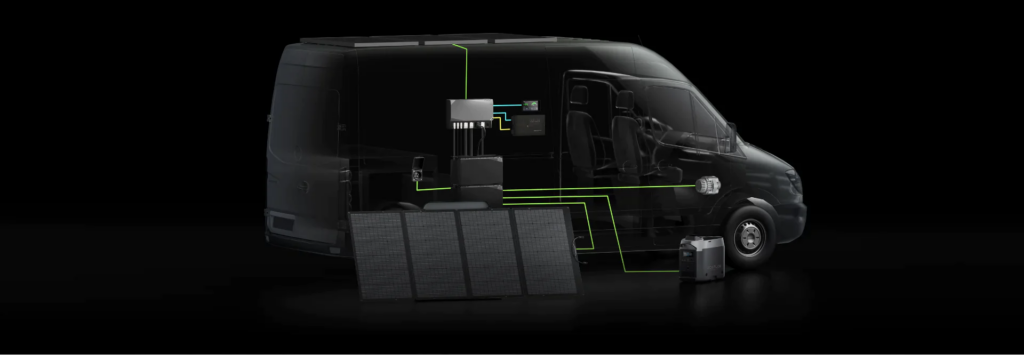
What are the Pro/Cons of the EcoFlow PowerKit
There are a few pros and cons to EcoFlow PowerKit, neither outweighing the other. It all depends on what matters to you!
| Type | Pro | Con |
|---|---|---|
| Cost | You will save money on installation, only if you are paying someone to install it for you. | The bang for your buck (cost per Watt hour) is more expensive with EcoFlow. |
| Installation Difficulty | EcoFlow is plug-and-play, making the installation very easy – mainly just mounting components. | n/a |
| Customizability | You can select different battery bank sizes depending on your needs. | If you need anything custom like a dedicated alternator, you’ll be leaving some charge on the table. |
| Charging Options | PowerKit accepts all traditional charging: Shore Power Solar Alternator Charging | Alternator charging is limited to 1.6kW, whereas a 48V Nations Alternator could theoretically provide 4.8kW. |
| Electrical Output Options | EcoFlow PowerKit offers 12V and 24V DC outputs. With a 3600W inverter, all traditional AC needs will be met. | You can only output 12V OR 24V, and 48V is not an option. |
| Customer Support | Since it is a closed system, you shouldn’t have issues with traditional electric systems like improper wire connections or faulty configurations. | EcoFlow customer service has a poor history, so getting help could be difficult. This is why we suggest going with Campervan HQ, as they will interface with you. |
Can you Use EcoFlow PowerKit for Full-Time Van Life?
Yes, you can use EcoFlow PowerKit for full-time van life! You need to perform your electrical breakdown to see if it satisfies your needs first, though. If you need extra charging or more battery storage, you may need to go with a different system. Make sure you check out the documentation for the PowerHub if you have more questions. Let us know your experience with EcoFlow below!
Final Verdict: What We Choose
We chose to go with Victron for our van build, over EcoFlow primarily because of two reasons:
- At the time of installation, EcoFlow didn’t have the Power Dock, meaning the max battery capacity was 10kWh. As of the end of 2024, this is no longer an issue! We’d need 15kW of batteries to even consider EcoFlow because of point 2.
- EcoFlow’s max alternator input is 800W with their Alternator Charger or 1.6kW with a custom solution, leaving 1.1kW on the table as unused power from our secondary alternator.
Since we went with an all-electric build, we knew we needed all the charge we could afford. Our Solar hasn’t been performing super well, and our secondary alternator is definitely carrying the team. We haven’t had to plug in to shore power for our 6 months on the road, and that is due to Victron, BattleBorn, and our WakeSpeed.
If we were trying to build a van quicker or didn’t have the experience in an electrical build, I would choose EcoFlow next time! They are truly innovating in this space and make an incredible product.
Save for Later
Save this to Pinterest to read again later!
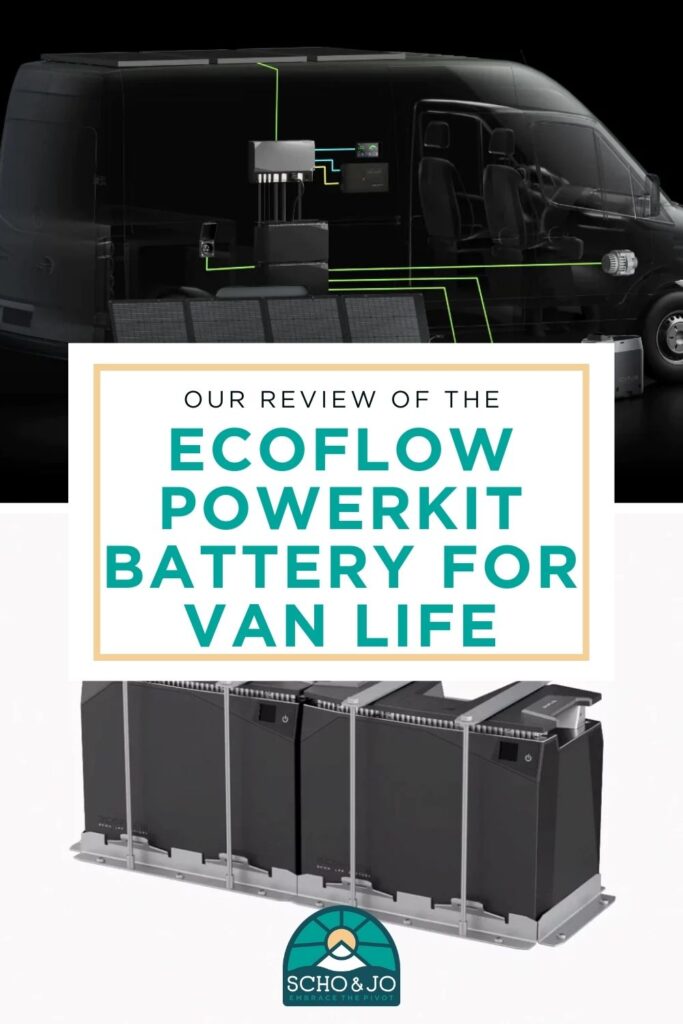
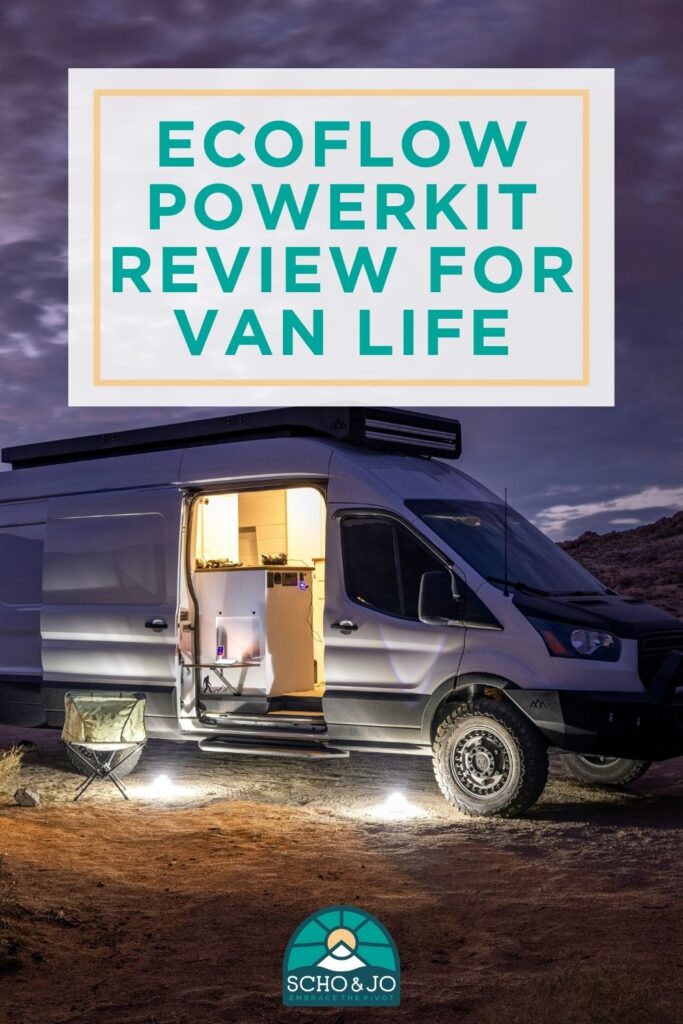
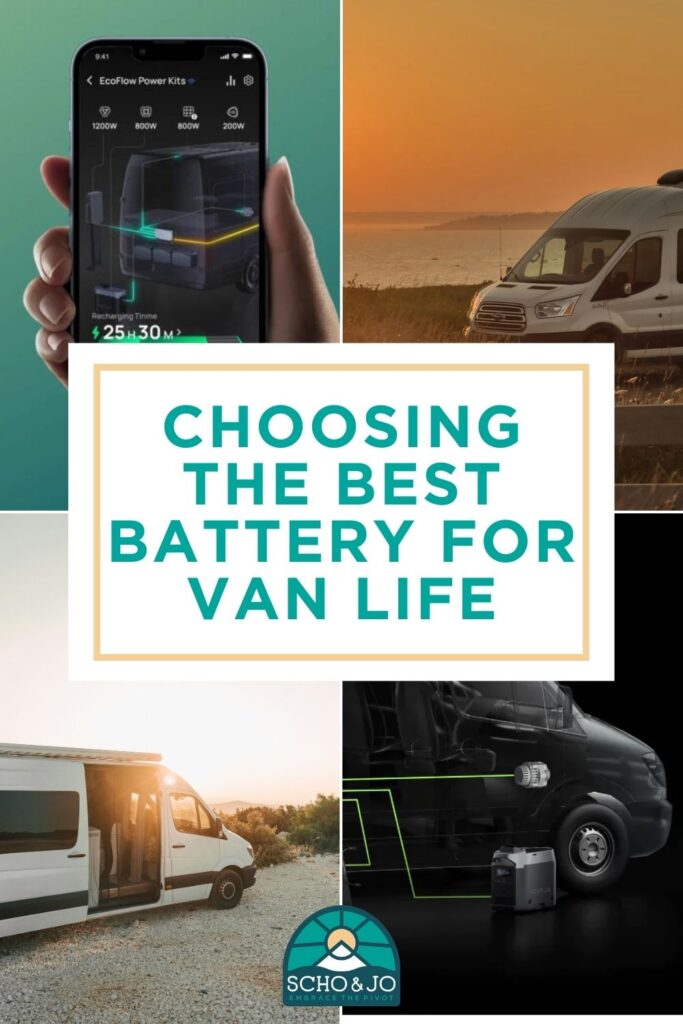
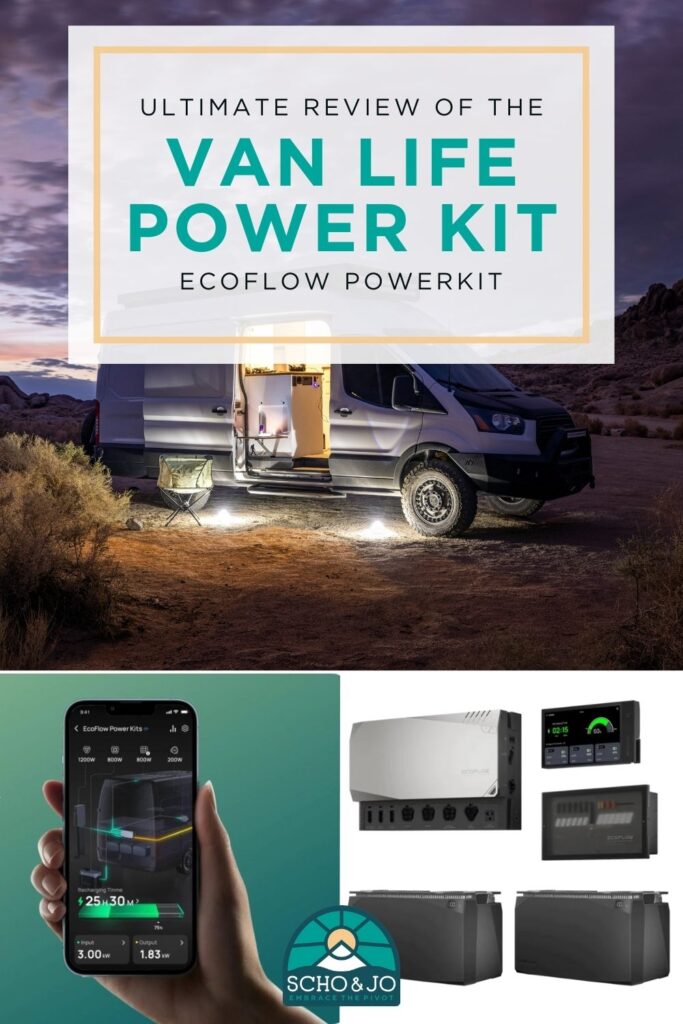

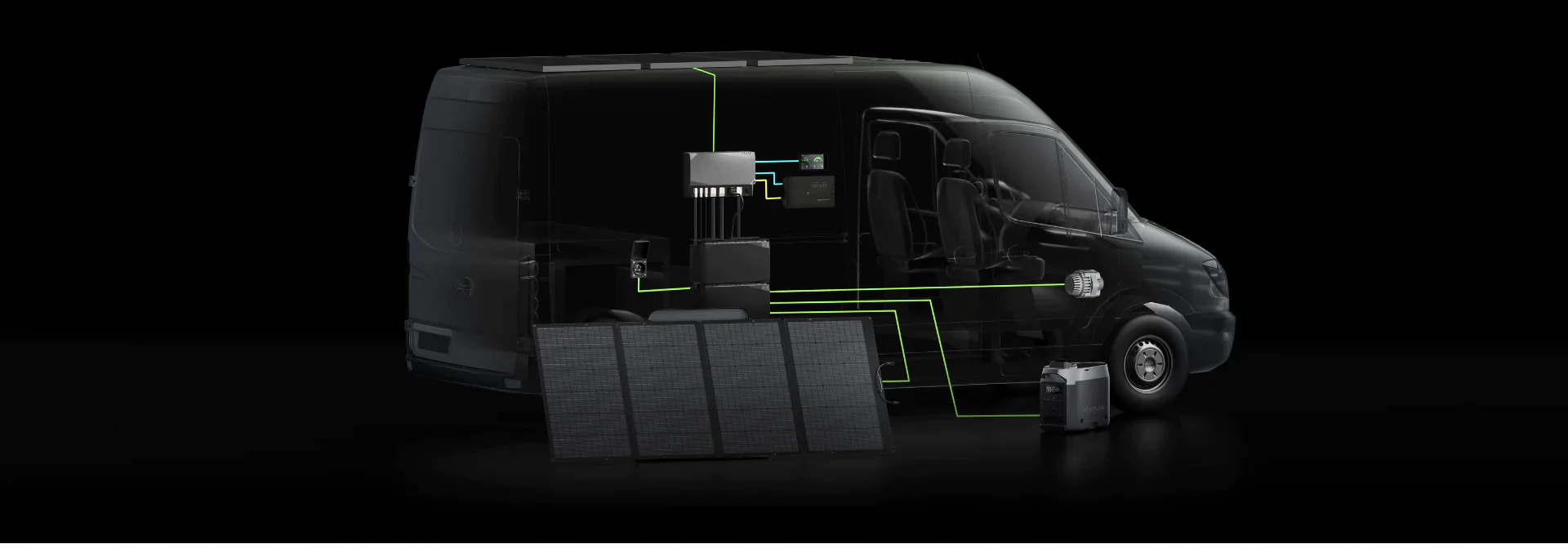







Leave a Reply